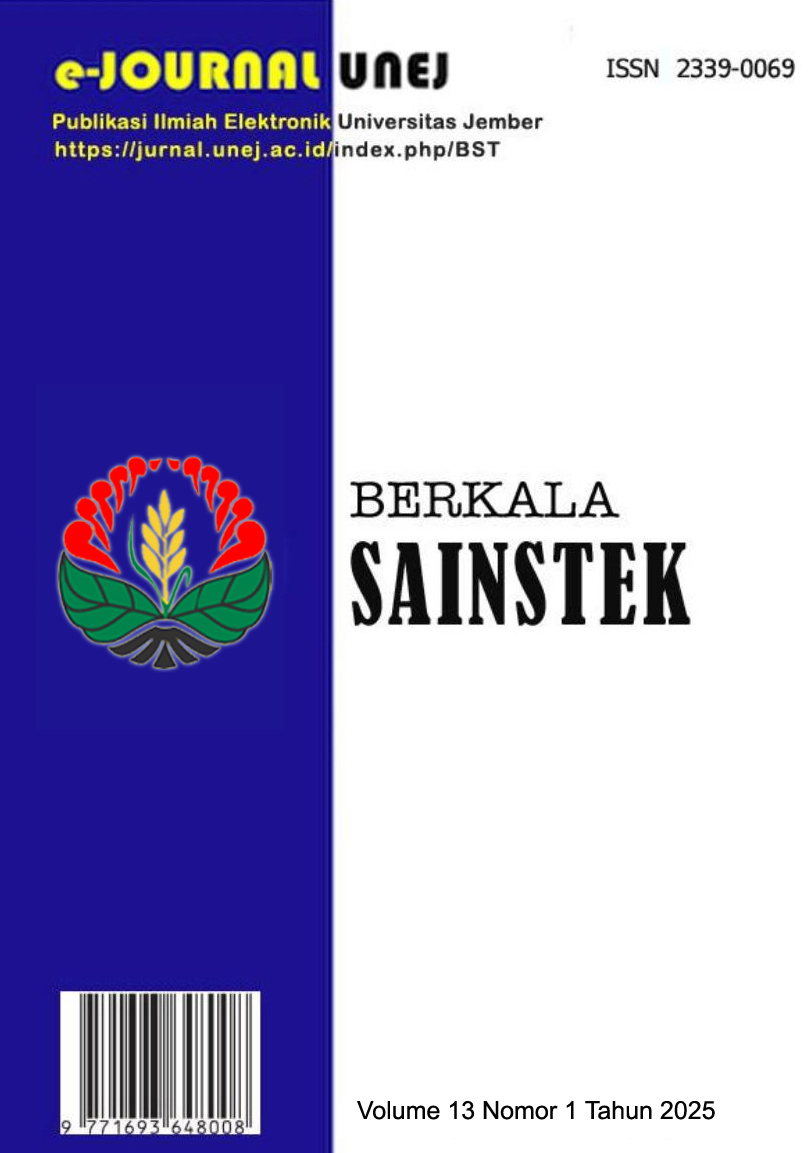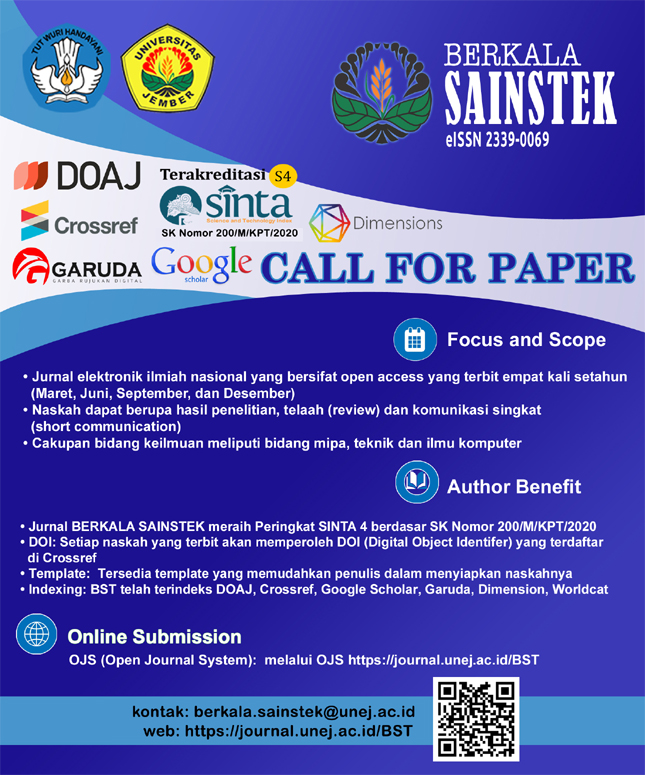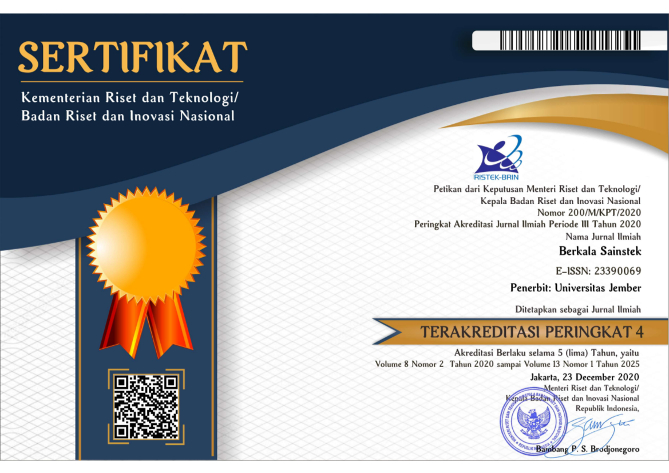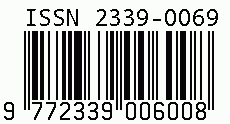Synthesis of Nanofiltration Membrane with Silica Variation for Waste Water Reduction
DOI:
https://doi.org/10.19184/bst.v13i1.53689Keywords:
Chitosan, Silica, Nanofiltration Membrane, Polyvinyl Alcohol, Polyethylene, GlycolAbstract
Rapid industrial development in Indonesia is accompanied by an increase in liquid waste, especially those containing heavy metals such as Lead (Pb), becoming a serious problem for the environment. Based on PermenLHK regulation No. 5 of 2014, TDS and pH levels of industrial waste must meet certain standards. To overcome this, this research aims to develop chitosan-silica-based nanofiltration membranes modified with Polyvinyl Alcohol (PVA) and Polyethylene Glycol (PEG) to efficiently reduce Pb ion content. Chitosan was chosen due to its environmentally friendly nature and adsorption ability, while the addition of silica aims to improve membrane stability. The membrane synthesis method involves sol-gel process with Tetraethyl Orthosilicate (TEOS) precursor, mixing of chitosan, PVA, and PEG, as well as membrane printing and drying. Characterization was performed using FTIR for functional group analysis, BET to measure surface area and porosity, and swelling test to evaluate water absorption capacity. The results showed that the chitosan-silica membrane was successfully formed with a porous structure according to nanofiltration characteristics (pore size 0.0005-0.005 μm). The results showed that in the FTIR test, the 3261-3289 cm-1 region formed a silanol group (Si-OH) so that it could bind to metal ions. In the 1415-1416 cm-1 region is the absorption of C-H. In the 1241-1252 cm-1 region is the absorption of Si-O symmetry of Si-O-Si. FTIR analysis confirmed the presence of silanol (Si-OH) and siloxane (Si-O-Si) groups that play a role in metal ion adsorption. BET tests revealed that the membrane had a specific surface area and micro pores, while swelling tests showed an increase in hydrophilicity with the addition of siloxane.
Downloads
Downloads
Published
Issue
Section
License
Copyright (c) 2025 Fadly Abdul Malik, Muhammad Fahmi Hakim, Teguh Pambudi

This work is licensed under a Creative Commons Attribution-NonCommercial 4.0 International License.





